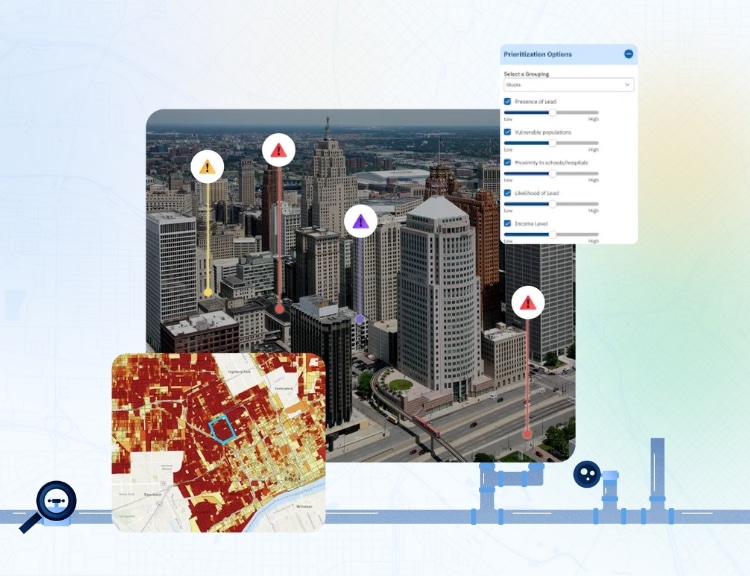This article was originally published on NOLA.com.
As the first step in a 10-year plan to rid New Orleans of toxic lead pipes, the Sewerage & Water Board said Thursday it will begin removing as many as 300 water lines leading to schools and day care centers that are made of lead or galvanized steel that contains lead solder.
The agency expects to open bids in early November and start work soon after, said S&WB executive director Ghassan Korban. “We’re going to target those first for obvious reasons, given their vulnerable populations,” Korban said.
That project will be followed by another contract to replace 800 publicly-owned lead water lines.
By the end of the year, Korban said the agency plans to hire a company to act as program manager for a longer-term water line replacement program, which will likely begin in 2025.
The announcement came as the New Orleans Water Collaborative was preparing to unveil a study that found 88% of 144 households tested in New Orleans had detectable levels of lead contamination in their water. Concern about lead contamination from water lines has grown during the past 20 years, as research has determined that the threat of lead poisoning, especially to young children, is significant.
To pay for the work, the water board expects to receive $86 million in federal funds administered through the state, almost half of which must be paid back, and hopes to be awarded another $66 million. The Environmental Protection Agency also announced this week that it would send $33 million to Louisiana for lead pipe removal efforts, with much of the money aimed at low-income and minority areas, and New Orleans may be eligible for some of those funds.
These projects were unveiled a week earlier than expected, after President Biden announced that the EPA is speeding up efforts to eliminate lead water lines nationwide, setting a removal deadline of 10 years.
In 2012, the EPA said it was reducing its voluntary “maximum contaminant level” of lead in drinking water to zero, after its research determined that no level of lead in water was safe. But that decision did not require local water suppliers to guarantee zero levels of contaminants in their system.
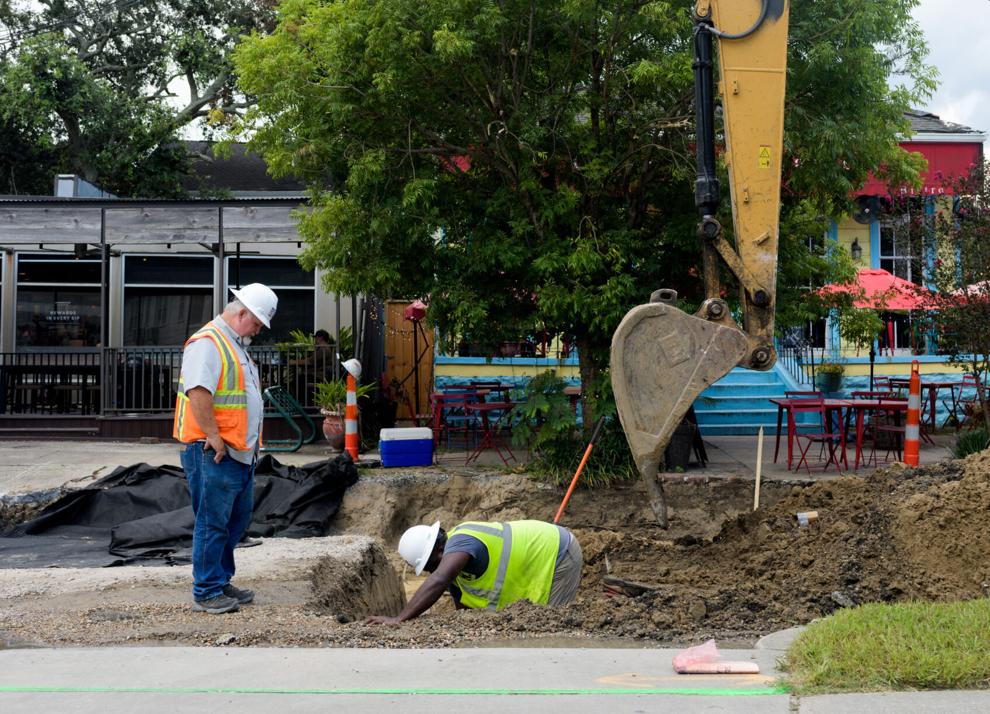
Instead, the EPA set an “action level” of 15 parts per billion of lead, with local systems required to remove pipes when that level was reached.
As part of this week’s pipe removal action, the agency reduced its “action level” to 10 parts per billion.
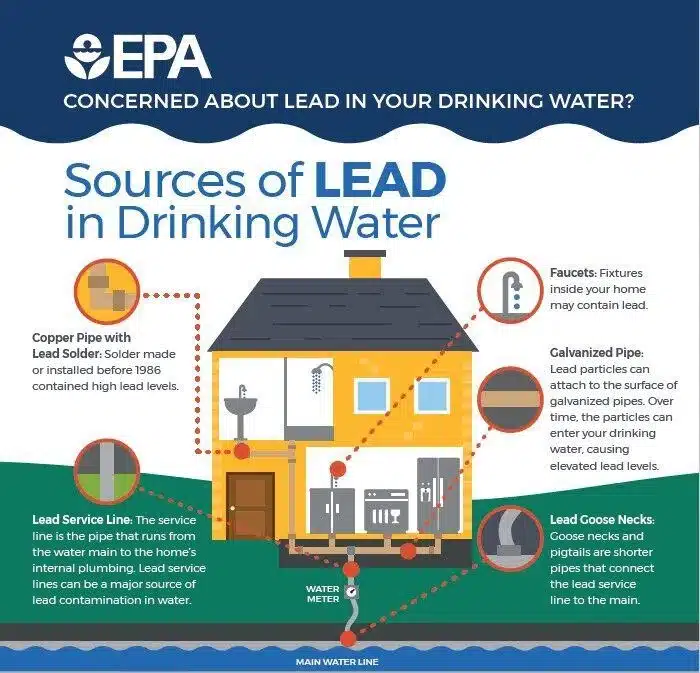
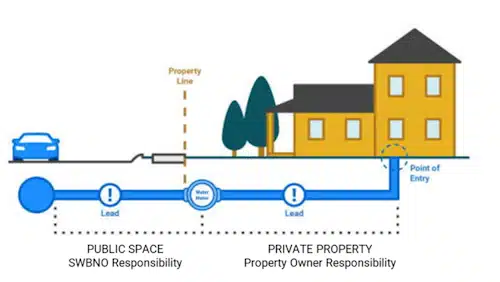
Long-running problem in New Orleans
In New Orleans, exposure to lead has historically occurred from a variety of sources, including lead pipes and lead-contaminated pipes and fixtures, chips and dust from lead-based paint in and around homes and businesses, and from lead in soil deposited by vehicle exhaust fumes when lead was used as an additive in gasoline to prevent engine “knocks.”
Louisiana law requires screening children for lead poisoning before the age of six. Children are typically tested for lead with a finger or heel prick at ages one and two. There is no agreed-upon safe level of lead in a child’s blood, but federal requirements lowered the rate that requires action from 5 micrograms per deciliter to 3.5 starting in 2022.
Typically, Orleans Parish has roughly 1,500 kids who need additional testing after initial high lead levels from pricks, according to data from the Centers for Disease Control and Prevention from 2017 to 2021. Depending on the year, between 12 and 43 had confirmed blood lead levels high enough to warrant treatment and more monitoring.
Lead is a potent neurotoxin that can raise the risk of stroke, heart disease and cognitive and developmental delays. Lead exposure in children is linked to lower I.Q. scores, attention problems and violent behavior. Symptoms include slow growth, increased tiredness or irritability and stomach problems.
“The most-feared outcome from lead exposures is going to be development and delay,” said Dr. Anthony Hudson, chief of pediatrics at LCMC Health’s East Jefferson General Hospital.
The greatest risk of damage is in children under five, including during pregnancy. Children have especially absorbent guts that make them more prone to lead poisoning than adults in the home, said Hudson. Typically, poisoning is traced back to paint in an older home or contaminated soil a child plays in and swallows, but water can also be a source of chronic exposure.
Local pipe removal plan
The S&WB began planning for its comprehensive lead pipe removal program well before the EPA announced it was recommending its own comprehensive removal efforts nationwide in early 2023.
As part of that effort, the utility has been working with BlueConduit, a water analytics company, to develop an inventory of all water service lines and whether they are lead or lead-contaminated, and on Friday it is launching the site swbno.org/Projects/LeadAwareness for residents and businesses with the latest results.
That effort, approved by the Louisiana Department of Health, used existing plumbing records, lead test kit results, dates of meter installations, and other data to identify pipeline materials. Based on the map’s initial results, the computer program was best able to identify materials in areas where homes were built after 1986, when lead pipes were banned nationally for homes.
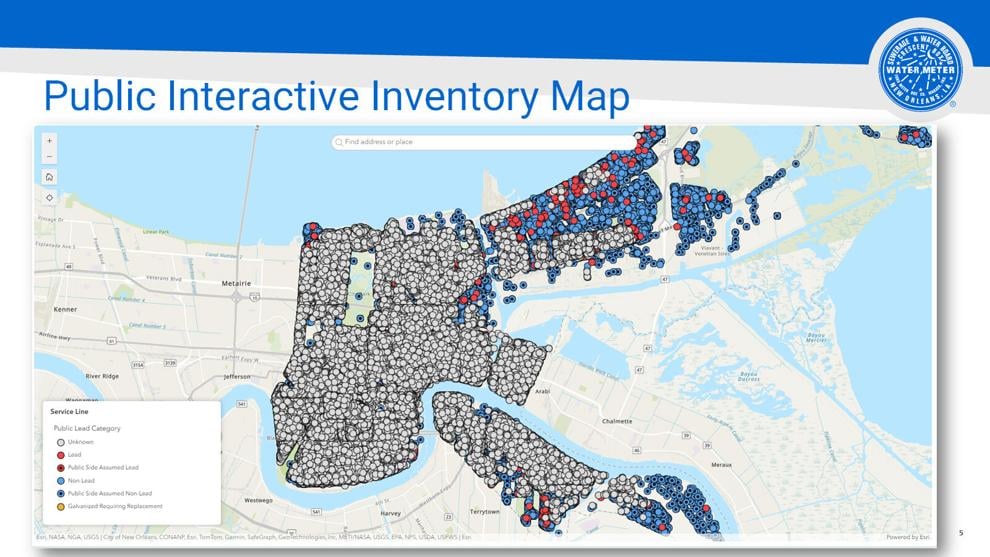
So far, that effort has identified about 15,000 customers with lead pipes that will need to be replaced, and another 119,000 customers with unknown pipe materials.
The areas where the fewest unknown pipe materials were found were in New Orleans East and in northwestern Lakeview.
The agency’s water line inventory is searchable by the address on the water account, and shows the status of service line material on both the public and private sides of the water meter.
While the S&WB has in the past required building owners to be responsible for repairs between the meter and privately owned buildings, the new program and EPA’s new rules require the water board complete the replacement of lines on private property.
The utility has secured public state revolving funds to support lead service line replacements, and there is legislation that has been proposed to allow S&WB to use that money for private replacements. The soonest that legislation could receive approval is during the 2025 Louisiana legislative session.
The utility plans to prioritize vulnerable populations first for both public and private replacements. However, if a property owner wishes to replace their private service line now, customers are encouraged to inform the S&WB.
Building owners are still responsible for replacing lines within their homes or businesses.
The S&WB expects to begin sending notifications by mail to customers with lead, galvanized steel or unknown material service lines in November that will explain the line replacement program.
The agency has already distributed 2,000 water pitchers equipped with filters that remove lead to homeowners and is awaiting funding to be able to distribute more. They can be requested online at swbno.org/Projects/LeadAwareness.
Lead testing kids also are available at swbno.org/Form/LeadTestingKitRequest.
Other certified laboratories can be found by calling the Safe Drinking Water Hotline at 800-426-4791 or visiting www.epa.gov/safewater/labs.
Read the full article on NOLA.com.


